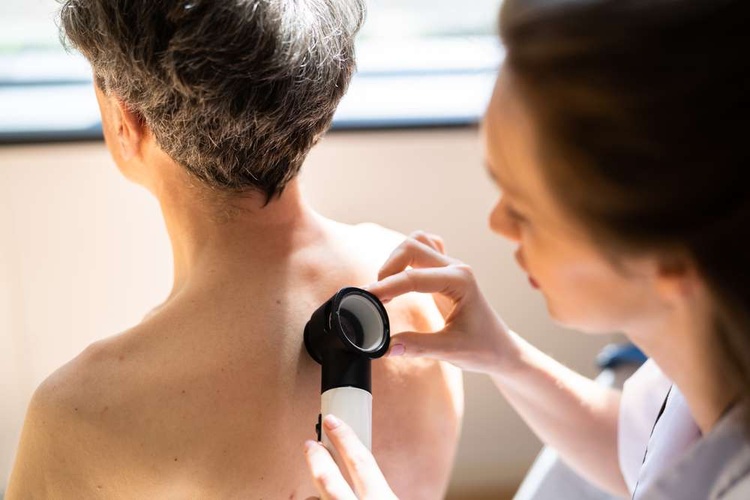What to Know About Cancerous Skin Rashes – Symptoms, Causes, and Treatments
Cancerous skin rashes are a serious concern that should not be ignored. These rashes can be a sign of underlying skin cancer and require prompt medical attention. In this article, we will discuss the causes, symptoms, and treatment options for cancerous skin rashes.

What are the common causes of cancerous skin rashes?
Cancerous skin rashes can be caused by various factors, with the primary culprit being prolonged exposure to ultraviolet (UV) radiation from the sun or tanning beds. Other contributing factors include:
-
Genetic predisposition
-
Weakened immune system
-
Exposure to certain chemicals or environmental toxins
-
Chronic skin inflammation or irritation
-
Previous skin cancer history
It’s important to note that while these factors increase the risk of developing cancerous skin rashes, they don’t guarantee their occurrence.
How can you identify symptoms of cancerous skin rashes?
Recognizing the symptoms of cancerous skin rashes is crucial for early detection and treatment. Some common signs to look out for include:
-
Persistent, non-healing sores or lesions
-
Rough, scaly patches that may be red or brown
-
Dome-shaped, pearly growths
-
Moles that change in size, shape, or color
-
Asymmetrical or irregularly bordered skin marks
-
Itching, bleeding, or crusting of existing skin lesions
If you notice any of these symptoms, it’s essential to consult a dermatologist for a professional evaluation.
What are the different types of skin cancer associated with rashes?
There are several types of skin cancer that can manifest as rashes or unusual skin growths. The most common types include:
-
Basal Cell Carcinoma (BCC): Often appears as a pearly bump or a flat, scaly patch.
-
Squamous Cell Carcinoma (SCC): Usually presents as a rough, scaly patch or a firm, red nodule.
-
Melanoma: Can develop in existing moles or appear as new, dark spots on the skin.
-
Merkel Cell Carcinoma: Typically appears as a firm, painless nodule on sun-exposed areas.
Each type of skin cancer has its unique characteristics and requires specific treatment approaches.
What treatment options are available for cancerous skin rashes?
Treatment for cancerous skin rashes depends on the type and stage of cancer, as well as the patient’s overall health. Common treatment options include:
-
Surgical excision: Removing the cancerous tissue and a margin of healthy skin
-
Mohs surgery: A precise technique that removes thin layers of skin until no cancer cells remain
-
Cryosurgery: Freezing the cancerous tissue with liquid nitrogen
-
Radiation therapy: Using high-energy rays to destroy cancer cells
-
Topical treatments: Applying medicated creams or ointments to the affected area
-
Immunotherapy: Boosting the body’s immune system to fight cancer cells
-
Targeted therapy: Using drugs that target specific molecules involved in cancer growth
The choice of treatment depends on various factors, and a dermatologist or oncologist will recommend the most appropriate option for each case.
How can you prevent cancerous skin rashes?
Prevention is key when it comes to cancerous skin rashes. Here are some effective strategies to reduce your risk:
-
Use broad-spectrum sunscreen with an SPF of 30 or higher daily
-
Wear protective clothing, including wide-brimmed hats and long-sleeved shirts
-
Seek shade, especially during peak sun hours (10 am to 4 pm)
-
Avoid tanning beds and sunlamps
-
Perform regular self-examinations of your skin
-
Schedule annual skin check-ups with a dermatologist
-
Maintain a healthy lifestyle with a balanced diet and regular exercise
-
Quit smoking and limit alcohol consumption
By incorporating these preventive measures into your daily routine, you can significantly reduce your risk of developing cancerous skin rashes.
What are the costs associated with treating cancerous skin rashes?
The cost of treating cancerous skin rashes can vary widely depending on the type of cancer, stage, and treatment method. Here’s a general overview of potential costs:
| Treatment Type | Average Cost Range |
|---|---|
| Surgical excision | $1,000 - $5,000 |
| Mohs surgery | $1,000 - $4,500 per stage |
| Radiation therapy | $10,000 - $50,000 for a full course |
| Topical treatments | $500 - $1,500 per month |
| Immunotherapy | $30,000 - $150,000 per year |
Prices, rates, or cost estimates mentioned in this article are based on the latest available information but may change over time. Independent research is advised before making financial decisions.
It’s important to note that many of these costs may be covered by health insurance, but out-of-pocket expenses can still be significant. Always consult with your healthcare provider and insurance company to understand your specific coverage and potential costs.
In conclusion, cancerous skin rashes are a serious health concern that requires prompt attention and proper treatment. By understanding the causes, recognizing the symptoms, and taking preventive measures, you can protect yourself and your loved ones from the potentially devastating effects of skin cancer. Regular self-examinations and professional check-ups are crucial for early detection and successful treatment of cancerous skin rashes.
This article is for informational purposes only and should not be considered medical advice. Please consult a qualified healthcare professional for personalized guidance and treatment.




